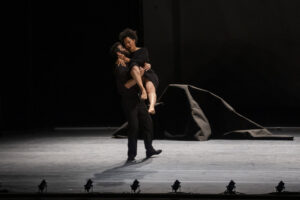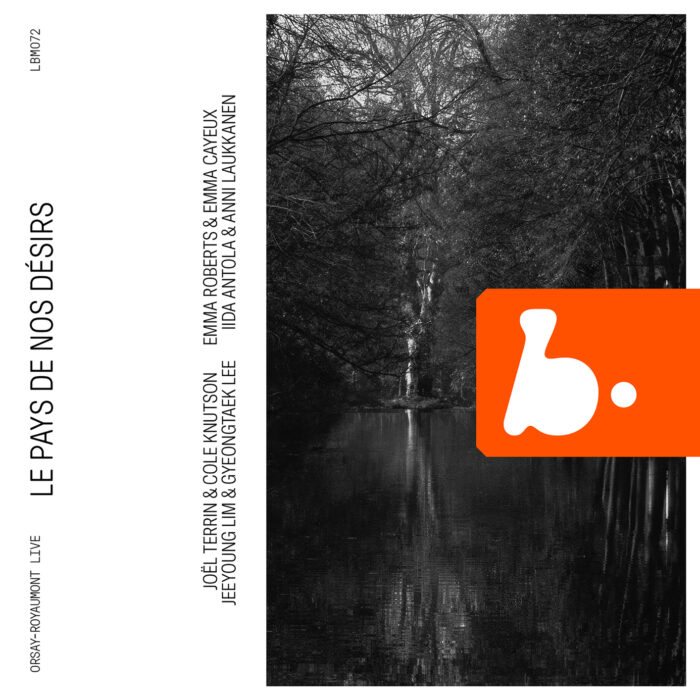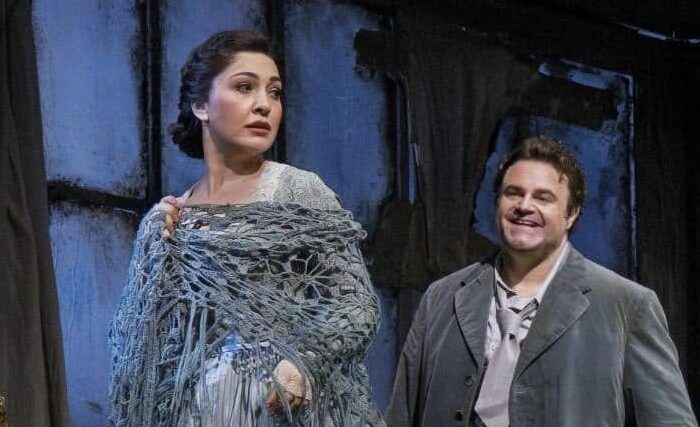
Cal Performances 2024 Review: Harawi
Julia Bullock Gives an Extraordinary Performance of Messiaen’s Song Cycle
By Lois Silverstein(Photo by Brittany Hosea )
Julia Bullock: “Bella Voce.”
“Harawi” at Cal Performances: not as compelling.
This was an aesthetic take on Olivier Messiaen’s “Harawi” song cycle (1945) modeled on the Andean harawi lament tradition, and centered around Julia Bullock’s extraordinary vocal gifts. Part of “Illuminations: Fractured History” series, and preceded by a panel of scholars and practitioners exploring ethical and aesthetic facets of Harawi. It raises questions about what to think of Messiaen’s use of his own personal life events, told in French poetry and complex rhythms, with the indigenous music and text that he took from the Quechua language. The performance ran an hour long. Here is an example of how Messiaen pressed his originality into new avenues that stirred artists of the American Opera Company to take his songs further, and make something new again. Where did we start and where did we end?
Illuminating Cast
A quartet of performers told the story: pianist Conor Hanick, choreographer/dancer Bobbi Jene Smith and choreographer/dancer Or Schraiber, and soprano Julia Bullock, regal in black and barefoot, directed by Zack Winokur. Music stayed the glue, the grand piano center stage, and Bullock positioned stage left seated but then continuing to move throughout the piece around with the dancers, dancing herself, as well as standing tall and distinctive. The dancers unfolded their whole bodies, and hair, in the case of Smith, an instrument itself, and while at first it seemed as if she would largely accent by similarity or difference the text and mood of Julia’s song, she herself, and then Schraiber continued to develop the emotional events: woman–woman, woman–man, woman. The remainder of the work engaged the three moving, one singing part, in the unfolding tale.
As one of the panel speakers said, the text included Harawi modalities and language in it, but it did not include whole Harawi itself, despite the title. The Quechuan words punctuated the French storyline, but then at times became the object and subject of expression. Bullock showed her extraordinary flexibility in articulation and dramatic emphasis in both languages, and while chanting Quechuan, made meaning related to the new narrative. Using allusions to Harawi chants that might accompany seeding corn or accompanying the dead to their graves, the scene before us told a love story with contemporary conflict and apparent resolution. The whole adaptation of the multiple songs to some might be called theft, to others, artistic inevitability and intriguing.
Bullock was clearly able to handle the shifts from one language to another–the subtitle overhead screen dominating perhaps too much–and move vocally and physically with ease. She was at home on the stage as well as with her fellow performers, including the pianist. Her vocal range was broad and her timbre rich and original. In fact, she could have carried the entire piece without any accompaniment. Her pianissimi seconded only her big, full fortes. Her voice filled the hall and never wavered. Whatever she was saying or doing, her voice remained the centerpiece and magnetized everything else. Indeed, the narrative only seemed to confine it, the voice told the story in itself, far-reaching, deep-diving, passionate, urgent, cognizant, at moments, lyrical. Someday she will perhaps sing Monteverdi’s “Poppaea”.
Musical Highlights
The piano was fierce, independent, determined. Never did it falter or fail to guide the other performers as well as pursue its task of providing the foundation for the events marked on stage while sounding out its “quirky” fractured melodic motifs. For those whose preferences were not with such slippery non sequiturs, the insistent rhythmic shifts and tonal originals were persistent but strenuous; for those who enjoy a good roller coaster ride, Messiaen provided it in the score. Bullock’s soprano moved with and in counterpoint with the score, offering a continuing contrast and yet created unity with the dramatic feast the keyboard kept throwing into the mix. This was a unique combination.
Love lies in new places; music leads and follows its vagaries. The American Opera Company took us where it wanted to go – the tension and the trauma. Now that many boundaries have dissolved, how will we choose? How will we fare?


